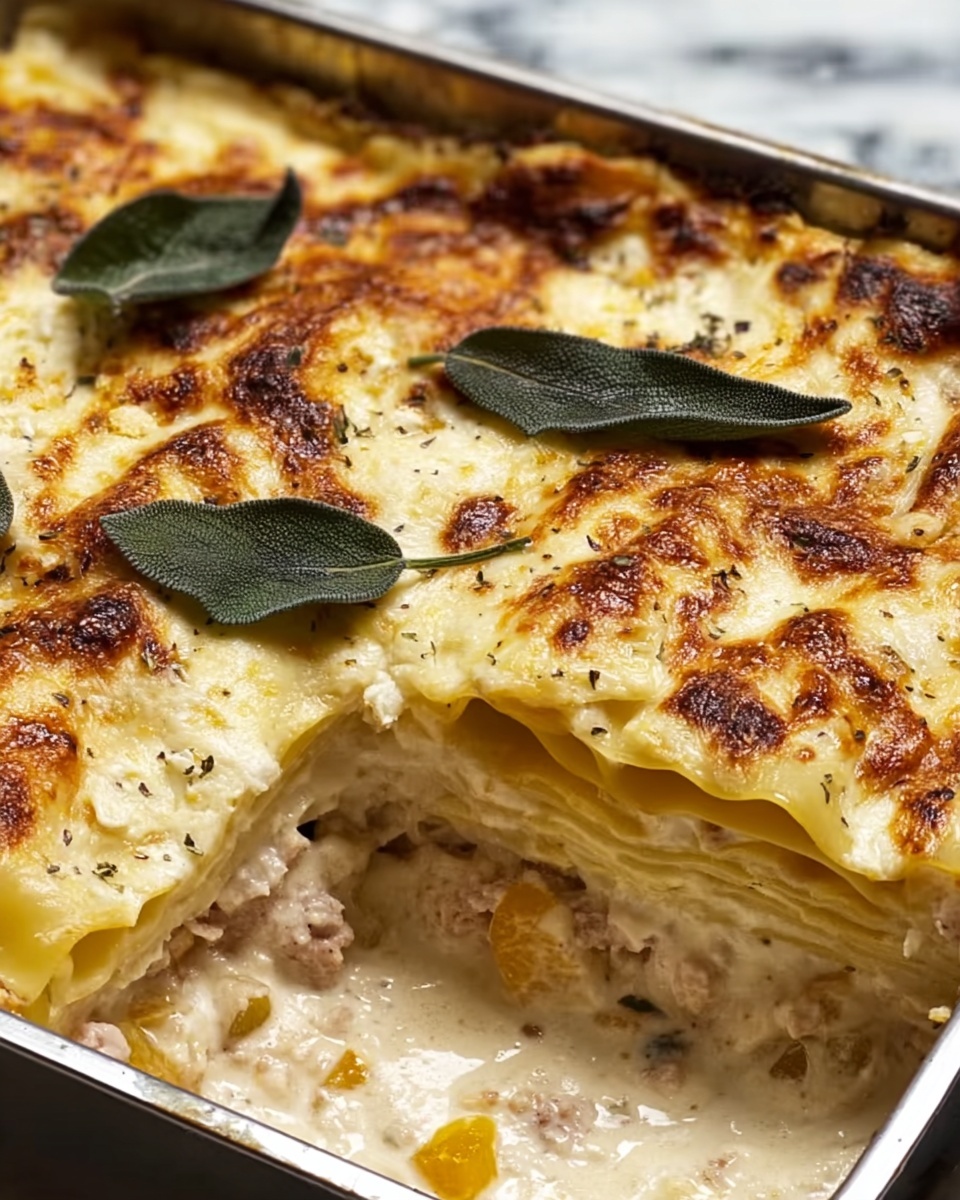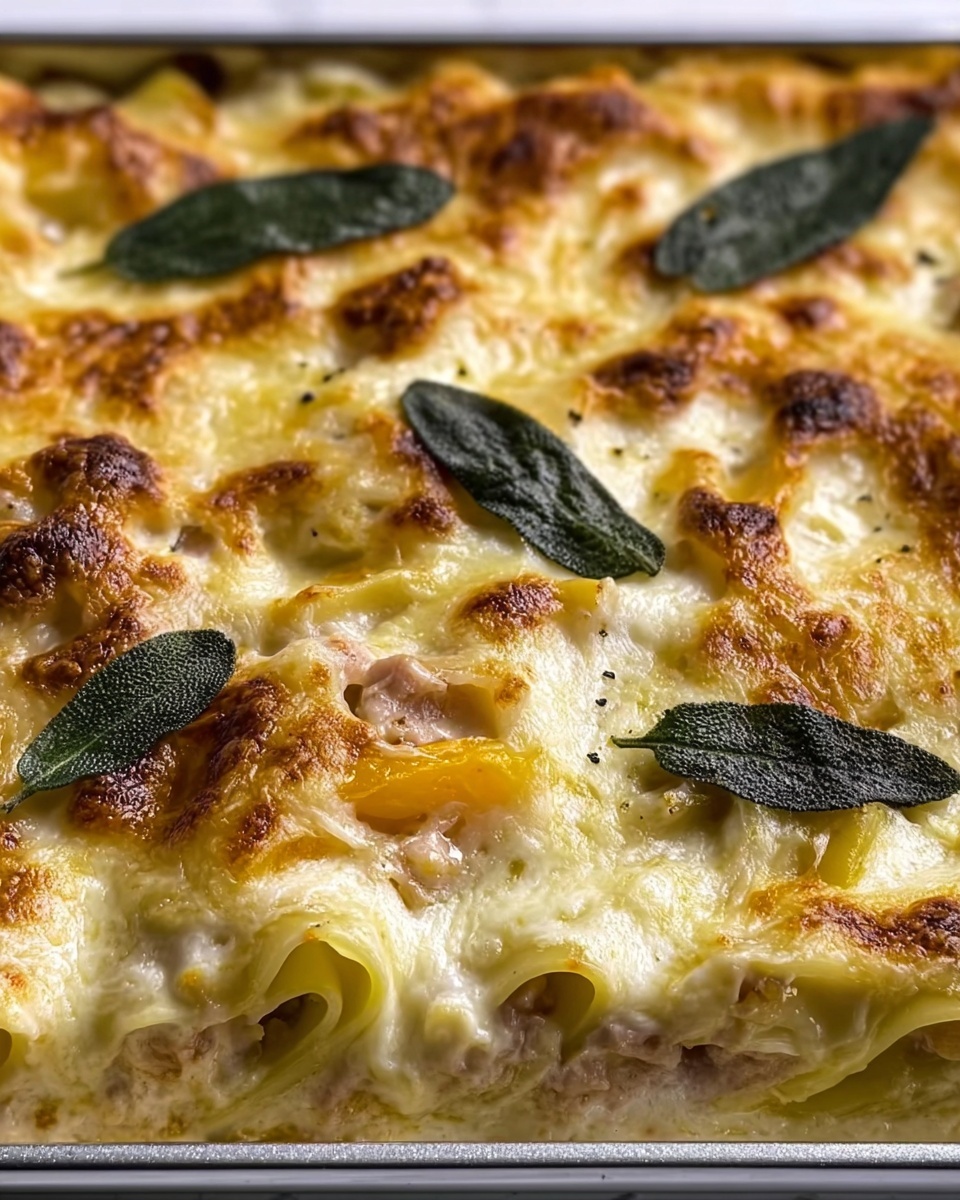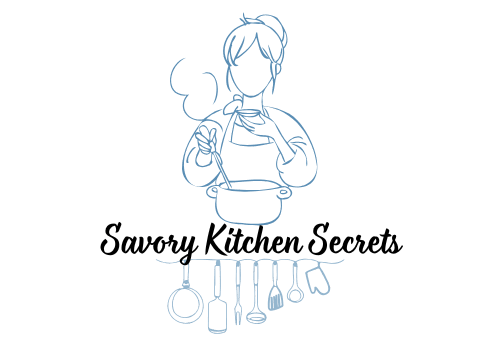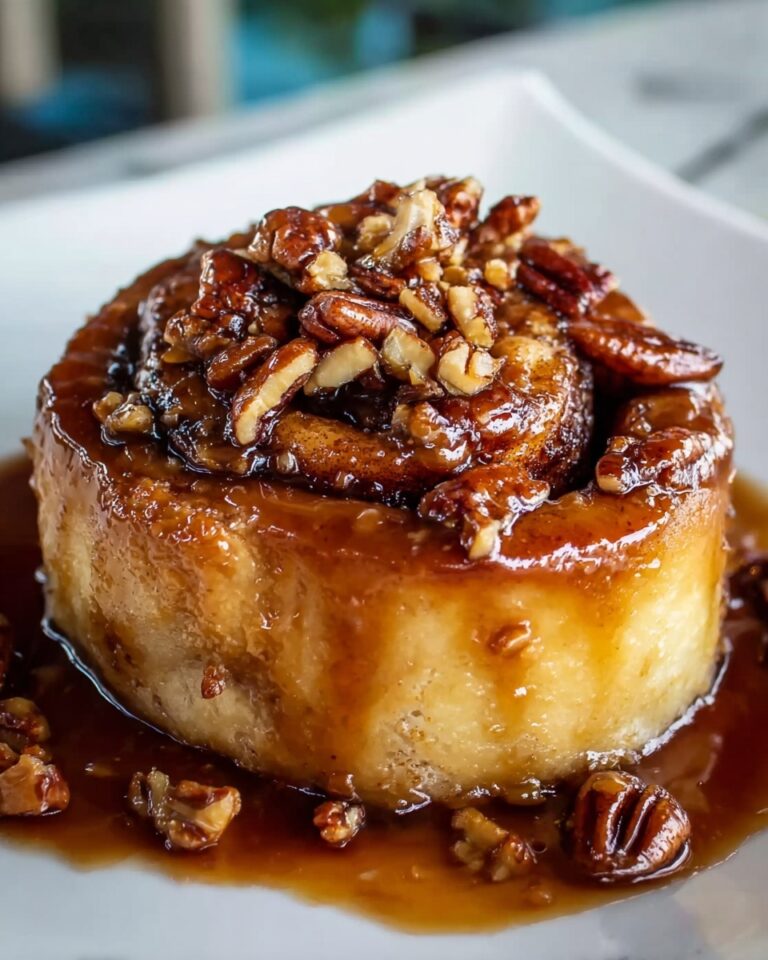If you’ve been searching for a comforting yet elegant dish to brighten up your dinner table, this Butternut Squash and Sage Lasagna Recipe is an absolute game changer. Imagine layers of roasted, caramelized butternut squash mingling with a fragrant blend of fresh sage and rich cheeses, all enveloped in tender pasta sheets and a creamy white sauce. Each bite brings a perfect balance of cozy autumnal flavors and silky textures that feel like a warm hug. Whether you’re cooking for a family gathering or craving a vegetarian main event, this lasagna is destined to become one of your all-time favorites.

Ingredients You’ll Need
Making this Butternut Squash and Sage Lasagna Recipe is straightforward because the ingredients are simple, fresh, and each plays a vital role in bringing out the dish’s full potential. From the sweet roasted squash to the herbal depth of sage and thyme, every component adds its own magic to the final masterpiece.
- Butternut squash: The star of the dish, providing natural sweetness and a tender texture when roasted.
- Olive oil: Adds a rich, fruity note and helps roast the squash beautifully.
- Salt and black pepper: Essential for seasoning throughout and enhancing all other flavors.
- Ground nutmeg: Just a pinch brings a warm, aromatic hint that complements the squash perfectly.
- Fresh sage: Offers a woodsy, slightly peppery flavor that elevates the entire dish.
- Ricotta cheese: Creamy and mild, it balances the robust flavors and adds luxurious texture.
- Grated Parmesan cheese: Adds sharpness and umami depth to the cheese mixture.
- Egg: Binds the ricotta mixture to keep layers cohesive.
- Fresh thyme: A delicate herbaceous touch that pairs beautifully with the sage.
- Butter: Forms the rich base of the creamy white sauce.
- All-purpose flour: Thickens the sauce to the perfect consistency.
- Milk: Provides creaminess and richness in the béchamel sauce.
- Lasagna noodles: The essential pasta layers that hold everything together.
- Shredded mozzarella cheese: Melts into a golden, stretchy topping that completes the dish.
- Fresh sage leaves (optional): Garnish that adds extra flair and herbal aroma when serving.
How to Make Butternut Squash and Sage Lasagna Recipe
Step 1: Prepare and Roast the Butternut Squash
Begin by preheating your oven to 400 degrees Fahrenheit (200 degrees Celsius). Toss the peeled, seeded, and cubed butternut squash with olive oil, salt, black pepper, a touch of ground nutmeg, and fresh chopped sage. Spread the squash evenly on a baking sheet and roast for about 25 to 30 minutes, or until tender and caramelized on the edges. Roasting unlocks the squash’s natural sweetness and infuses it with herbal warmth, making each bite simply irresistible.
Step 2: Mix the Ricotta Cheese Filling
While the squash roasts, combine ricotta cheese with grated Parmesan, a beaten egg, chopped fresh thyme, salt, and pepper in a medium bowl. This cheesy mixture will add creaminess and a subtle tang that balances the sweetness of the squash. Setting it aside now makes layering much easier later on.
Step 3: Make the Creamy White Sauce
In a saucepan, gently melt butter over medium heat. Whisk in the flour and cook it for one to two minutes, which will help remove the raw flour taste. Gradually add milk while whisking constantly to prevent lumps. Continue cooking until the sauce thickens to a smooth, velvety consistency. Add ground nutmeg, salt, and pepper to finish. This béchamel sauce is the luscious glue that keeps the lasagna layers creamy and dreamy.
Step 4: Assemble the Lasagna
Reduce your oven temperature to 375 degrees Fahrenheit (190 degrees Celsius). Grease a baking dish to prevent sticking. Start by spreading a layer of white sauce on the bottom. Next, lay down the cooked lasagna noodles, followed by dollops of the ricotta mixture, a generous layer of roasted butternut squash, and another layer of white sauce. Repeat these layers until you run out of ingredients, finishing with a final topping of shredded mozzarella cheese. This layering technique ensures every forkful delivers a perfect balance of squash, cheese, sauce, and pasta.
Step 5: Bake the Lasagna
Cover the baking dish with aluminum foil and bake for 25 minutes, allowing the flavors to meld and the cheese to melt beautifully. Then, remove the foil and continue baking for another 15 to 20 minutes so the mozzarella on top browns into a golden, bubbly masterpiece. The aromas filling your kitchen at this point will make the wait totally worth it.
Step 6: Rest and Serve
Once out of the oven, let the lasagna rest for about 10 minutes before slicing. This helps the layers settle and makes serving easier. If you like, garnish with fresh sage leaves to add a pop of color and an herby finish that perfectly complements the dish’s warm spices and creamy richness.
How to Serve Butternut Squash and Sage Lasagna Recipe

Garnishes
Fresh sage leaves sprinkled on top add a fragrant and eye-catching touch. For an extra hit of herbaceousness, drizzle a little olive oil infused with sage or sprinkle some toasted pine nuts over the lasagna just before serving. These small additions can elevate the presentation and flavor, making your lasagna feel extra special.
Side Dishes
This lasagna pairs beautifully with vibrant green salads dressed in tangy vinaigrette to balance the richness. Steamed or sautéed greens such as kale, spinach, or broccolini add freshness and texture contrasts. For a heartier meal, roasted root vegetables or garlic bread can help round out the experience perfectly.
Creative Ways to Present
Want to impress your guests? Serve individual portions in small ramekins or deep dishes to let everyone enjoy their own personal slice of comfort. You can also layer smaller amounts into colorful glass baking dishes for a festive touch that showcases those beautiful orange and green hues. Adding a sprinkle of freshly grated Parmesan at the table invites everyone to customize their serving.
Make Ahead and Storage
Storing Leftovers
Leftover Butternut Squash and Sage Lasagna Recipe keeps wonderfully in the refrigerator for up to 4 days. Store it in an airtight container to maintain freshness and prevent the creamy sauce from drying out. It’s a perfect next-day lunch or dinner option that tastes just as good warmed up.
Freezing
This lasagna freezes exceptionally well, making it a fantastic make-ahead meal. Freeze it before baking or after it has cooled completely. Wrap the lasagna tightly with plastic wrap and foil to avoid freezer burn. It will keep well for up to 3 months, letting you enjoy this comforting dish anytime.
Reheating
To reheat, thaw overnight in the fridge if frozen. Warm individual portions in the microwave or reheat the whole dish covered with foil at 350 degrees Fahrenheit (175 degrees Celsius) until heated through and bubbly, which usually takes about 20-30 minutes. Removing the foil during the last few minutes will revive that perfect golden cheesy top.
FAQs
Can I use frozen butternut squash for this recipe?
Absolutely! While fresh butternut squash provides the best texture and flavor, frozen can be a convenient substitute. Just be sure to thaw and pat it dry well before roasting to prevent excess moisture that could affect the lasagna’s consistency.
Is it possible to make this lasagna gluten-free?
Yes! Simply swap the traditional lasagna noodles for gluten-free alternatives, which are widely available in stores. Ensure your flour for the white sauce is replaced with a gluten-free blend or cornstarch for the thickening step to keep the sauce perfectly creamy.
Can I prepare this dish entirely in advance?
You can assemble the lasagna a day ahead, cover it tightly, and refrigerate it until you’re ready to bake. This makes it an easy option for entertaining or busy weeknights. Just allow a bit of extra baking time if starting from cold.
What can I substitute if I don’t have ricotta cheese?
Cottage cheese is a common substitute that works well, especially if blended briefly for a smoother texture. You could also try mascarpone or a mix of cream cheese and Greek yogurt for a similar creaminess and tang.
How do I ensure the lasagna doesn’t turn out watery?
Be sure to roast the squash until well caramelized, as this removes excess moisture. Also, cook the lasagna noodles properly and drain thoroughly. Lastly, avoid over-saucing; layering the white sauce evenly but not excessively will help maintain the perfect texture.
Final Thoughts
If you’re craving a dish that feels both special and soul-satisfying, the Butternut Squash and Sage Lasagna Recipe should be at the top of your list to try. It’s a beautiful way to celebrate seasonal flavors, impress guests, and fill your home with comforting aromas. Once you take that first forkful, you’ll understand why this recipe is such a beloved favorite. Get ready to make it a go-to dish in your kitchen!







